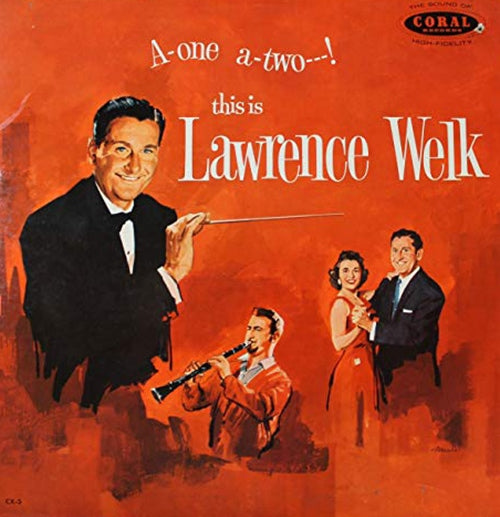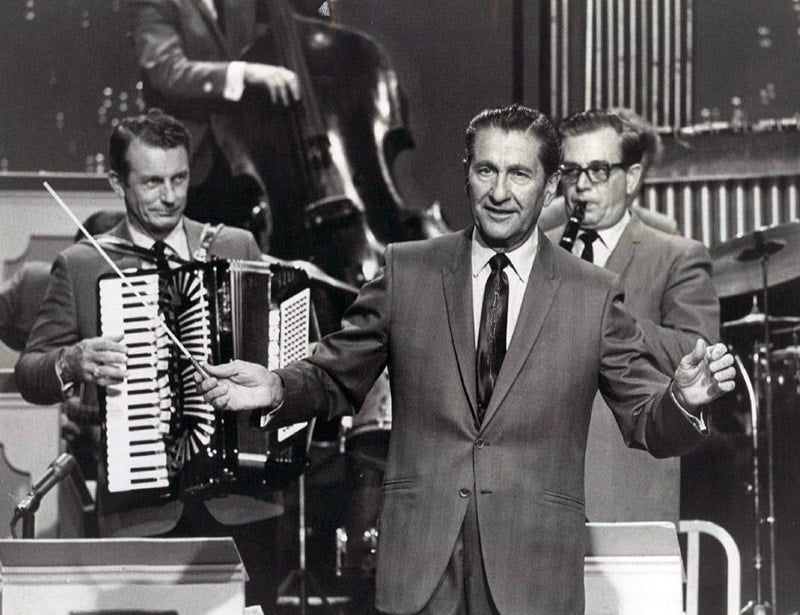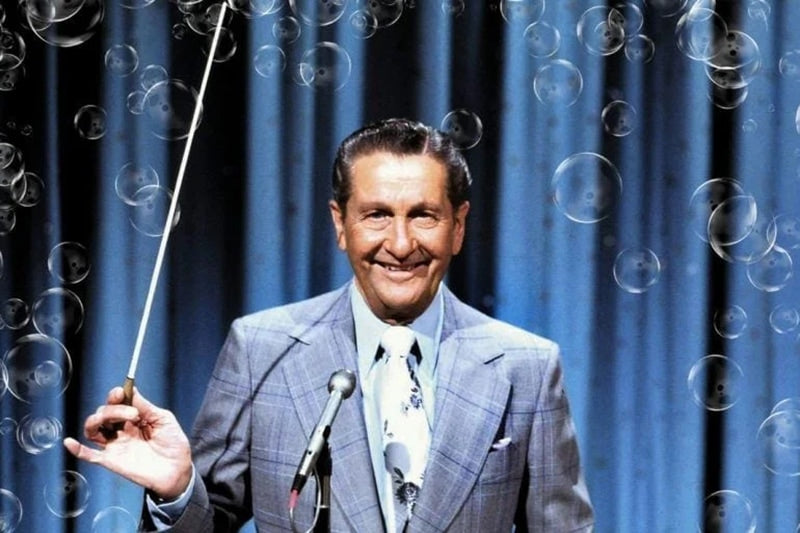Are there two Americas? Are they red versus blue, conservative vs. liberal, conspiracy-minded vs. reality-based? The answer is yes, but the divide is not along these lines. The two Americas are populated by people who like Lawrence Welk and people who don’t.
Lawrence Welk specialized in a whipped-potatoes version of popular music. From the early 1950s until his retirement in 1982, Lawrence Welk and his Champagne Music Makers and accordion superstar Myron Floren and Norma Zimmer the Champagne Lady and the whole crew of singing-and-dancing homies produced music that was clean and bright, with all the corners sanded off.
Welk died in 1992, but death couldn’t stop this juggernaut, no more than it could stop Elvis, Marilyn, Jimi, etc. Public television stations continue to run old episodes of The Lawrence Welk Show, with new performances and interviews with surviving cast members. Welk’s audience continues to be replenished by new generations of easy-listening old people.
My grandma Bella was your typical Lawrence Welk customer. Bella, who was born in 1904, loved nice music played by nice people. “Wasn’t that ah-wunnerful?” Welk, a native German speaker, would comment after another duet from his immaculately dressed and hair-styled players. “You can tell they have ah-wunnerful home life.” Bella loved Welk’s music, plus his show was a respite from her soap operas with their nonstop adulteries, divorces, and bouts of amnesia.
“Stevie,” Bella said to me more than once in the 1970s when I looked like the undercover cop on every show from Starsky and Hutch to Serpico, “why can’t you cut your hair like the beautiful boys on Lawrence Welk?”
Did Lawrence Welk perform a valuable service by introducing millions of people to their musical heritage, or did he commit an unforgiveable crime by turning that heritage into zero-calorie Coke? We were a house divided: Bella took the first position. I always took the second. But I’ve since realized that I had one thing completely wrong about Welk. He launched the phenomenon we know today as the tribute album.
Once Is Not Enough
“And now a salute to Gershwin with ah-Bobby and ah-Sissy,” the maestro would announce, before the happy couple puréed one of the Gershwins. Welk saluted many artists in his 30 years on the air, from Stephen Foster to the Beatles and on into the 1970s, a decade fraught with musical traps (such as punk, drugs, and disco) for the bandleader who went to Number 1 on the charts in 1961 with a song that featured a harpsichord.
The result of Welk’s unceasing efforts to pay homage to the gods of pop have led us to the situation we’re in today. Check the Wikipedia page that lists tribute albums. There are hundreds of these things. There are so many salutes to Iron Maiden that they occupy their own page.
Tribute albums have evolved far beyond Welk’s idea of a lone song or a brief medley. They generally fall into two categories, which, in honor of the man, I will call Ah-One and Ah-Two.

Ah-One is a salute to an entire album. The Beatles’ Abbey Road was the first album to be honored with a tribute, and it happened twice within a month of its release in 1970: George Benson’s The Other Side of Abbey Road and Booker T. & the M.G.’s’ McLemore Avenue. These weren’t track-by-track salutes, but 16 artists gave us just that in 2005 on This Bird Has Flown: 40th Anniversary Tribute to Rubber Soul.
Does waiting 40 years give you deeper insights than waiting a couple of weeks? Based on these three records, that answer is no.
Ah-Two is a salute to an artist’s body of work. Once again, the Beatles were the first subject of this kind of salute with The Chipmunks Sing the Beatles Hits (1964). On this immortal disc, which may also be the first tribute album ever recorded, Alvin and The Chipmunks covered 12 songs from the Beatles’ first two years. Which is more frightening: that The Chipmunks Sing the Beatles Hits spent five months on the Billboard 200, or that the Beatles loved the idea of being chipmunked?
The biggest tribute album of them all was Chimes of Freedom: The Songs of Bob Dylan, released in 2012 to celebrate the 50th anniversary of Amnesty International. 76 artists performed 76 songs on four CDs, with an abridged two-CD follow-up from Starbucks. (I don’t know what Dylan thought of an abridged version of his music available at a very nice and always clean coffee shop, but Welk would’ve loved it!)
A tribute album should show you an old band in a new light; a really good reinvention should punch you in the head or chase your dog up a tree. The artists on Chimes of Freedom, like the artists on so many tribute albums, are too reverential. If you’re going to salute someone, cut loose. Own the song you’ve been assigned. No one on Chimes of Freedom goes head-to-head with Dylan à la Jimi Hendrix on “All Along the Watchtower” – just as none of the 21 artists on Cinnamon Girl: Women Artists Cover Neil Young for Charity push Neil against the wall or even ruffle his hair. They sand the corners off – another legacy of Lawrence Welk.
You can find examples of artists who own it on the Depeche Mode tribute For the Masses (1998), which taught me how good Depeche Mode’s songs were if you could just get somebody else to play them. The highlights came from Failure (“Enjoy the Silence,” an ironic choice for a moody but extremely noisy band) and Rammstein (who pumped some Armageddon-level hysteria into “Stripped”).
Bella Has the Last Word
One Sunday night when I was six, my parents dressed up and fled their responsibilities for the evening, leaving me and my toddler brother in Bella’s care. I wanted to watch Walt Disney’s Wonderful World of Color. Bella wanted to watch The Lawrence Welk Show. We stood in front of the one TV, me the Baby Boomer in my Daniel Boone frontiersman outfit, Bella the short, no-nonsense European immigrant who survived World War I, turning the TV dial back and forth between the two channels. There were only three channels available at the time. Bella won that battle by putting me to bed, where I remained while champagne music wafted down the hall.
It’s been years since I’ve had Bella to argue with, but while I was lucky enough to have her in my life I should’ve admitted that her America still has something to teach me.




